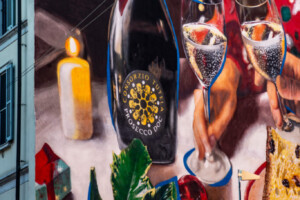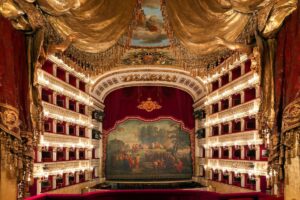Which Italian wineries are worth keeping an eye on? Antinori, Biondi Santi, Caprai, Ca’ del Bosco, Case Basse (Soldera), Aldo Conterno, Giacomo Conterno, Romano Dal Forno, Fattoria di Felsina, Frescobaldi, Gaja, Galardi (Terra di Lavoro), Bruno Giacosa, Isole e Olena, Ornellaia, Poliziano, Prunotto (Antinori), Quintarelli, Castello di Rampolla, Rivetti (La Spinetta), San Giusto a Rentennano, Mario Schiopetto, Roberto Voerzio: these are Hugh Johnson’s “favorites”, the enological “excellents” in Italy (the wineries with the legendary “four stars” rating).
Hugh Johnson, the most famous wine writer in the world, in collaboration with, among others, journalist and wine taster Daniel Thomases, notes with praise even a few individual wines Vin Santo di Avignonesi, the Annamaria Clementi di Ca’ del Bosco, older vintage Marsala, the “Percarlo” di San Giusto a Rentennano, and the two cult wines from Piero Antinori, Solaia and Tignanello.
Also noted as the most important Italian terroir are: Barbaresco, Barolo,
Bolgheri, Brunello di Montalcino, Chianti Classico, Colli Orientali del Friuli, Collio, Franciacorta, Picolit, and Sagrantino di Montefalco, all decorated with the “four star” top score.
With over 5 million copies sold, this guide, which “does not want to classify wine, but which invites us to love it for what it is, each one with its own peculiar and unique personality”, has become a reference point for all cultured and cosmopolitan wine lovers, considered a sort of pocket “compass”, indispensable when choosing the best bottles of wine from the most celebrated territories all over the world. Hugh Johnson’s guide (which can be used “to help choose both everyday table wine and vintage and prestigious wines for cellar collections”) also has a special selection of 10 Italian wines for 2006, a sort of “shopping list” for demanding connoisseurs.
Barolo Cascina Francia 2000 Giacomo
Conterno (Piedmont)
Barbaresco Rabajà 2001 di Bruno Giacosa (Piedmont)
Amarone della Valpolicella 2001 Pasqua (Veneto)
Fatto in Paradiso 2003
Lis Neris (Friuli Venezia Giulia)
Brunello di Montalcino 1999 Salvioni
(Tuscany)
Paleo Rosso 2001 Le Macchiole (Tuscany)
Chanti Classico Riserva Il Poggio 2001 Monsanto (Tuscany)
Rosso Piceno Superiore Campo della Mura 2000 Terre Cortesi Moncaro (Marche)
Montepulciano d’Abruzzo Colline Teramane Neromoro Riserva 2001 Nicodemi (Abruzzo)
Taurasi Riserva Vigna Cinque Querce 1999 Molettieri (Campania).
This famous wine writer (sales of his books have reached record numbers worldwide) also discusses “what makes a wine a great wine”: “It is very difficult. It could be the super concentration, but that is not all. The boutique wines of St-Emilion, for example, have a density that seeps from the label, but they can be less fascinating than a Grand Cru Classé, which along with the concentration is matched with a subtle transparency, a veil that allows us to pass through an opening in a hedge and look into another garden that reveals new delights.
Too much concentration is like being in a room with heavy drapes and furnishings and no windows. A great wine is an illusion: it challenges you to take it and hold it, and just when you think you have it, it’s out of your hands. A great wine takes risks: great painters, great writers and composers walk a line, a balance between failure and boredom, and so do great wines. Taking the risk to produce great wines which taste like their terroir is the essence of current discourses on quality. It is not easy to take this risk, neither for those producing nor for those consuming: but why bother with the rest? It’s not worth it”.
The guide by Hugh Johnson “the Englishman living in Great Britain when he’s not traveling the globe”, is also unique because it reveals the author’s own interests. It has been defined by “Newsweek” as “possibly the only wine guide that is absolutely necessary”. It is the guide (Rosenberg & Sellier, 360 pages, 15.50 euros) that knows how to speak to everyone and takes to heart “the battle to defend the individuality of wine and the safeguarding of the special relationship between the wine maker and the land: it does not give scores and does not make classification lists, but with simplicity and independence of uncommon judgment it invites readers to taste wines in order to discover the joy that they offer, each one with its own unrepeatable personality”.
Copyright © 2000/2025
Contatti: info@winenews.it
Seguici anche su Twitter: @WineNewsIt
Seguici anche su Facebook: @winenewsit
Questo articolo è tratto dall'archivio di WineNews - Tutti i diritti riservati - Copyright © 2000/2025








































































































































































































